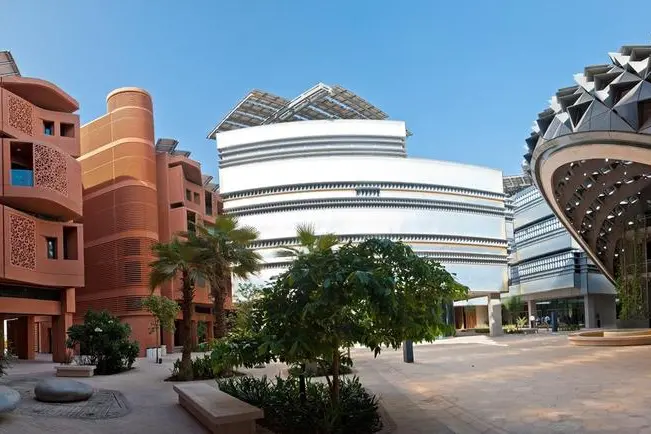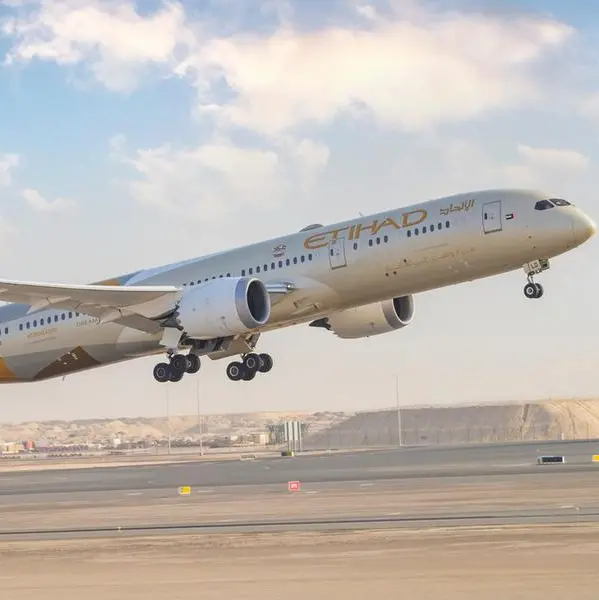PHOTO
19 January 2017
By Shane McGinley
Ten years ago any discussion about sustainability in the United Arab Emirates would invariably turn to Masdar as proof that the Gulf Arab oil producing country was making strides to be greener and reduce reliance on fossil fuels.
The green energy firm created a buzz in 2006 when it announced plans to build the world’s most sustainable eco-city on the outskirts of Abu Dhabi emirate – Masdar City. The ambitious project was unveiled with much fanfare as a carbon-neutral, car-free urban centre capable of housing around 40,000 residents.
In 2008, Masdar City broke ground but since then only a handful of buildings have been built at the site, including the Masdar Institute of Science and Technology.
Although Masdar, wholly owned by Abu Dhabi investment fund Mubadala, has been investing millions of dollars on renewable energy projects, the vision for the carbon-free city seemed to have faded from the public eye.
This month that is all about to change and the project is set to get a new lease on life, although it no longer claims to be a zero-carbon, car-free city. Officials have promised a host of new announcements at Abu Dhabi Sustainability Week and the Masdar Festival following the completion of 90 percent of Phase 1 of the project.
The firm now says that more than a third of Masdar City will be completed within the next five years.
“The biggest thing was the masterplan itself… When we started doing Phase 1 it was not commercially viable, as the technology was not serving our vision,” Yousef Baselaib, executive director of sustainable real estate, told Zawya during a tour of the Masdar City last month.
When the project was launched it was solely backed by the government, but this was out of necessity as the private sector was not willing to take a gamble, Baselaib said, adding that the situation was now different with a decade of research behind the project.
Proof of concept
“It took 10 years to educate the market that sustainability is not, as you expect, expensive and that you have to spend more money on it than conventional buildings,” he said, pointing out that the Masdar buildings, which are made from low-carbon cement, 90 percent recycled aluminium and locally-sourced materials, are no more expensive to construct than others in Abu Dhabi, but actually consume 40 percent less power.
“We proved our concept and we are now offering it to third parties and we are doing JVs (joint ventures) with third parties. Almost 60 percent of our investment is with the third party,” he added.
The cornerstone of the city is the Masdar Institute Campus, which is home to around 300 students. The commercial space is currently fully rented out and accommodates 400 brand names including General Electric, Lockheed Martin, Mitsubishi and Schneider Electric. The headquarters of the International Renewable Energy Agency is also on-site, while Siemens also has its Middle East headquarters in the city.
This week the first prototype EcoVilla will be unveiled, ready for the first test family to move in to the futuristic home, which will be an energy and water-efficient property that produces more power than it consumes. This will set the groundwork for the villa construction section in later phases, which has already been sold to third party developers.
School operator GEMS Education has signed up to operate schools on the site, while Dubai-based retail operator Majid Al Futtaim is set to open a 300 million dirham ($81 million) mall with around 60 outlets in 2018.
Commercial side of sustainability
One of the standout points on a tour of Masdar city is the Personal Rapid Transit (PRT) system. Opened to the public in 2010, the driverless pods have been used by around two million passengers on the 2km loop used to transport students and visitors from the parking lot to the Masdar Institute.
The PRT was initially designed as the answer to plans to make Masdar car-free, but this aim was soon dropped when it proved unpopular with backers, as Baselaib explained.
“We did changes to the masterplan and one of the difficulties in the first phase was that no third party would invest in the construction if the car park is outside the city as they (residents) will find it hard to reach their homes, even if we had our own internal system. So, we switched from that and each building now has its own car park.”
Despite its new momentum and portfolio of private sector investors, the car-free element is not the only part of the original goals to be scrapped in the rethink.
“I think this was announced a long time ago that we are not zero carbon, but we are low emission,” Baselaib said. “To be a zero neutral city, it is not something that is easily achieved, unless you sacrifice the commercial side of the sustainability,” he said, adding that ultimately Masdar is “a profit company”.
Masdar as a company is more than just the city, it also invested in renewable energy projects around the world, the latest of which was a 25 percent stake in the world’s first floating offshore wind farm, which will be located in the North Sea off the coast of Scotland.
Baselaib said his team is working on sharing its knowledge to help develop similar sustainable urban projects around the world. “We have done a lot of projects outside Masdar and we are mandated to do more projects, based on our experience over the last 10 years.”
How long before we see Masdar City Mark II somewhere around the world?
© Zawya 2017
By Shane McGinley
Ten years ago any discussion about sustainability in the United Arab Emirates would invariably turn to Masdar as proof that the Gulf Arab oil producing country was making strides to be greener and reduce reliance on fossil fuels.
The green energy firm created a buzz in 2006 when it announced plans to build the world’s most sustainable eco-city on the outskirts of Abu Dhabi emirate – Masdar City. The ambitious project was unveiled with much fanfare as a carbon-neutral, car-free urban centre capable of housing around 40,000 residents.
In 2008, Masdar City broke ground but since then only a handful of buildings have been built at the site, including the Masdar Institute of Science and Technology.
Although Masdar, wholly owned by Abu Dhabi investment fund Mubadala, has been investing millions of dollars on renewable energy projects, the vision for the carbon-free city seemed to have faded from the public eye.
This month that is all about to change and the project is set to get a new lease on life, although it no longer claims to be a zero-carbon, car-free city. Officials have promised a host of new announcements at Abu Dhabi Sustainability Week and the Masdar Festival following the completion of 90 percent of Phase 1 of the project.
The firm now says that more than a third of Masdar City will be completed within the next five years.
“The biggest thing was the masterplan itself… When we started doing Phase 1 it was not commercially viable, as the technology was not serving our vision,” Yousef Baselaib, executive director of sustainable real estate, told Zawya during a tour of the Masdar City last month.
When the project was launched it was solely backed by the government, but this was out of necessity as the private sector was not willing to take a gamble, Baselaib said, adding that the situation was now different with a decade of research behind the project.
Proof of concept
“It took 10 years to educate the market that sustainability is not, as you expect, expensive and that you have to spend more money on it than conventional buildings,” he said, pointing out that the Masdar buildings, which are made from low-carbon cement, 90 percent recycled aluminium and locally-sourced materials, are no more expensive to construct than others in Abu Dhabi, but actually consume 40 percent less power.
“We proved our concept and we are now offering it to third parties and we are doing JVs (joint ventures) with third parties. Almost 60 percent of our investment is with the third party,” he added.
The cornerstone of the city is the Masdar Institute Campus, which is home to around 300 students. The commercial space is currently fully rented out and accommodates 400 brand names including General Electric, Lockheed Martin, Mitsubishi and Schneider Electric. The headquarters of the International Renewable Energy Agency is also on-site, while Siemens also has its Middle East headquarters in the city.
This week the first prototype EcoVilla will be unveiled, ready for the first test family to move in to the futuristic home, which will be an energy and water-efficient property that produces more power than it consumes. This will set the groundwork for the villa construction section in later phases, which has already been sold to third party developers.
School operator GEMS Education has signed up to operate schools on the site, while Dubai-based retail operator Majid Al Futtaim is set to open a 300 million dirham ($81 million) mall with around 60 outlets in 2018.
Commercial side of sustainability
One of the standout points on a tour of Masdar city is the Personal Rapid Transit (PRT) system. Opened to the public in 2010, the driverless pods have been used by around two million passengers on the 2km loop used to transport students and visitors from the parking lot to the Masdar Institute.
The PRT was initially designed as the answer to plans to make Masdar car-free, but this aim was soon dropped when it proved unpopular with backers, as Baselaib explained.
“We did changes to the masterplan and one of the difficulties in the first phase was that no third party would invest in the construction if the car park is outside the city as they (residents) will find it hard to reach their homes, even if we had our own internal system. So, we switched from that and each building now has its own car park.”
Despite its new momentum and portfolio of private sector investors, the car-free element is not the only part of the original goals to be scrapped in the rethink.
“I think this was announced a long time ago that we are not zero carbon, but we are low emission,” Baselaib said. “To be a zero neutral city, it is not something that is easily achieved, unless you sacrifice the commercial side of the sustainability,” he said, adding that ultimately Masdar is “a profit company”.
Masdar as a company is more than just the city, it also invested in renewable energy projects around the world, the latest of which was a 25 percent stake in the world’s first floating offshore wind farm, which will be located in the North Sea off the coast of Scotland.
Baselaib said his team is working on sharing its knowledge to help develop similar sustainable urban projects around the world. “We have done a lot of projects outside Masdar and we are mandated to do more projects, based on our experience over the last 10 years.”
How long before we see Masdar City Mark II somewhere around the world?
© Zawya 2017












